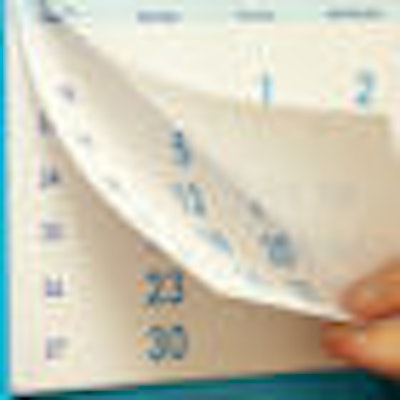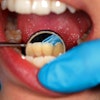
That howling noise the dental community heard throughout 2009 came from the winds of change, as technological innovation, the healthcare crisis, and tough economic conditions combined to test many of the profession's long-standing traditions.
It seemed that everyone was taking on a new role: A new class of dental therapists was allowed to pull teeth. Patients used the Internet to answer oral health questions. Dentists tested their patients' blood and used CAD/CAM to fabricate crowns. Physicians placed sealants and pulled teeth.
Such transformations, building for years, accelerated in 2009 partly because of the economy. 2009 may go down in the annals as the year that dentistry discovered it's not recession proof. Preliminary reports suggest that dentists experienced a drop in income after years of increases that steadily topped inflation.
That's probably temporary. By some measures the global recession that started in the dying days of 2007 (and may or may not have ended this year) is just about the worst since the Great Depression.
Analysts say the dental practices that suffered the most were those emphasizing elective procedures such as whitening. But the greatest suffering was among indigent patients as state governments trimmed Medicaid and other strands of the oral health safety net. The consequences of the cutbacks are already being felt, such as the Michigan patient who died after being denied dental care through Medicaid because the state had canceled adult benefits.
Midlevel movement
In the meantime, political leaders focused on what appeared to be a less expensive way of providing dental care to more people: midlevel providers.
The state of Minnesota on May 16 passed the first state law to set up a new class of dental professional -- dental therapists and advanced dental therapists. The latter category would be able to extract teeth and place restorations without direct supervision from a dentist, if a dentist approved.
Louisiana legislators, too, got caught up in a debate over access to care. When a dentist there started treating Medicaid patients in schools, the Louisiana Dental Association sponsored legislation to bar the practice, arguing that temporary school clinics were unsanitary and might provide only cursory care. After heavy lobbying on both sides, the Legislature punted the question to the state dental board, which issued strict new regulations.
Legislation and lawsuits
Concerns about access permeated federal healthcare reform discussions as well. A sweeping healthcare reform bill that passed in the U.S. Senate on Christmas Eve would fund 15 pilot projects in whatever states want to give the idea a try. The same law allows the dental health aide therapist program in Alaska to spread to any Indian healthcare service in the country, if allowed by separate state or federal laws and requested by Indian tribes. The midlevel provider issue has emerged as the most contentious split in organized dentistry.
The first order of business for Congress next year will be to reconcile that bill with a different version passed in November by the U.S. House of Representatives. Though the House bill doesn't include any mention of midlevel dental providers, it does match the Senate's mandate that all children in new public insurance exchanges have dental benefits. Both versions include new money to train dental professionals and to support preventive programs.
Legal issues also bedeviled dentists -- and would-be dentists -- in 2009.
- Groups who had sued the FDA in effort to ban dental amalgam were disappointed by the agency's decision to declare the material more or less safe.
- A dentist sued Yelp, the Internet service in which patients can rate businesses, including dentists.
- A South Carolina woman got $2 million in damages when a dental clinic mistakenly removed all her maxillary teeth.
- Two students pleaded guilty to faking transcripts to obtain admission and financial aid to attend Louisiana State University's dental school.
Products and progress
As bitter as these battles were, dentistry also gained recognition during the year. Evidence mounted for the oral systemic link, and the connection got a nod from physicians with a position paper published by the American Journal of Cardiology. Numerous other studies further illuminated the link between periodontal disease and a host of medical conditions, including diabetes, stroke, cancer, rheumatoid arthritis, and cardiovascular disease.
The ability to regrow hard and soft dental tissues by using stem cells from existing tooth pulp also made progress, although the reality of using this technique in a clinical setting is still a few years away.
Research forged ahead in anesthesia as well. Perhaps the most controversial paper presented at the International Association of Dental Research annual meeting warned against the use of 4% articaine (Septocaine, Ultracaine) in a mandibular block.
Dental product companies, too, offered to enhance the dentist's armamentarium. Early detection of caries and cancer continues to drive new product development; the Spectra from Air Techniques, for example, uses a blue-light LED to identify decay-causing bacteria on individual teeth, while Trimira's Identafi uses a three-wavelength optical illumination and visualization system to catch oral cancer. And cone-beam CT continues to gain ground as a dental diagnostic tool, while at the same time raising questions about medicolegal liabilities.
CAD/CAM is also changing the face of modern dentistry, with multiple new intraoral scanners for digital impressions introduced in 2009. In addition, at least five companies launched new direct or indirect restoration materials. The year also saw numerous refinements in implants, lasers (with competition heating up in laser-based treatments for periodontal disease), handpieces, and practice management software -- including the appearance of the first mobile apps for dentistry.
Still, while all of these products are designed to improve the practice of dentistry, many can be difficult to afford when patients are struggling to pay for their treatments. But with reports of an economic rebound now blowing in the wind, dental professionals finished the year with grounds to hope for a happy New Year.















